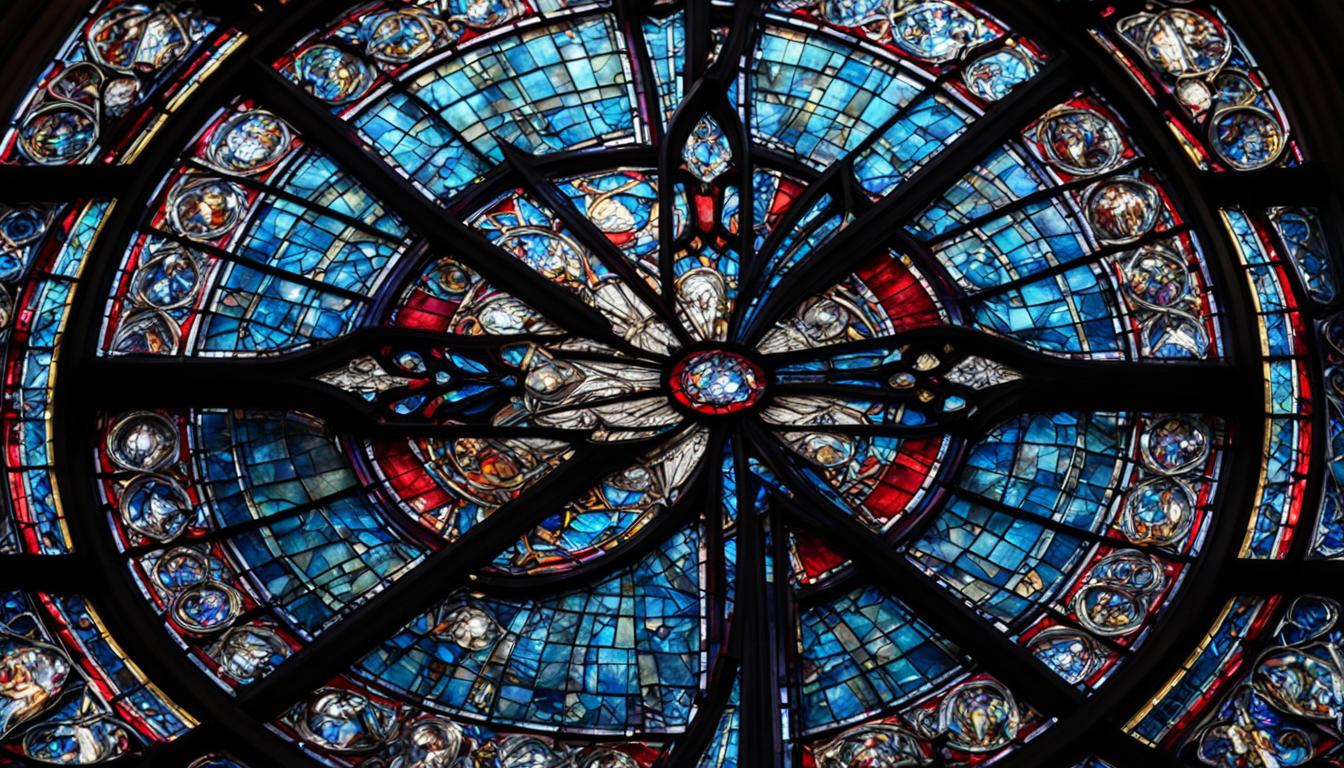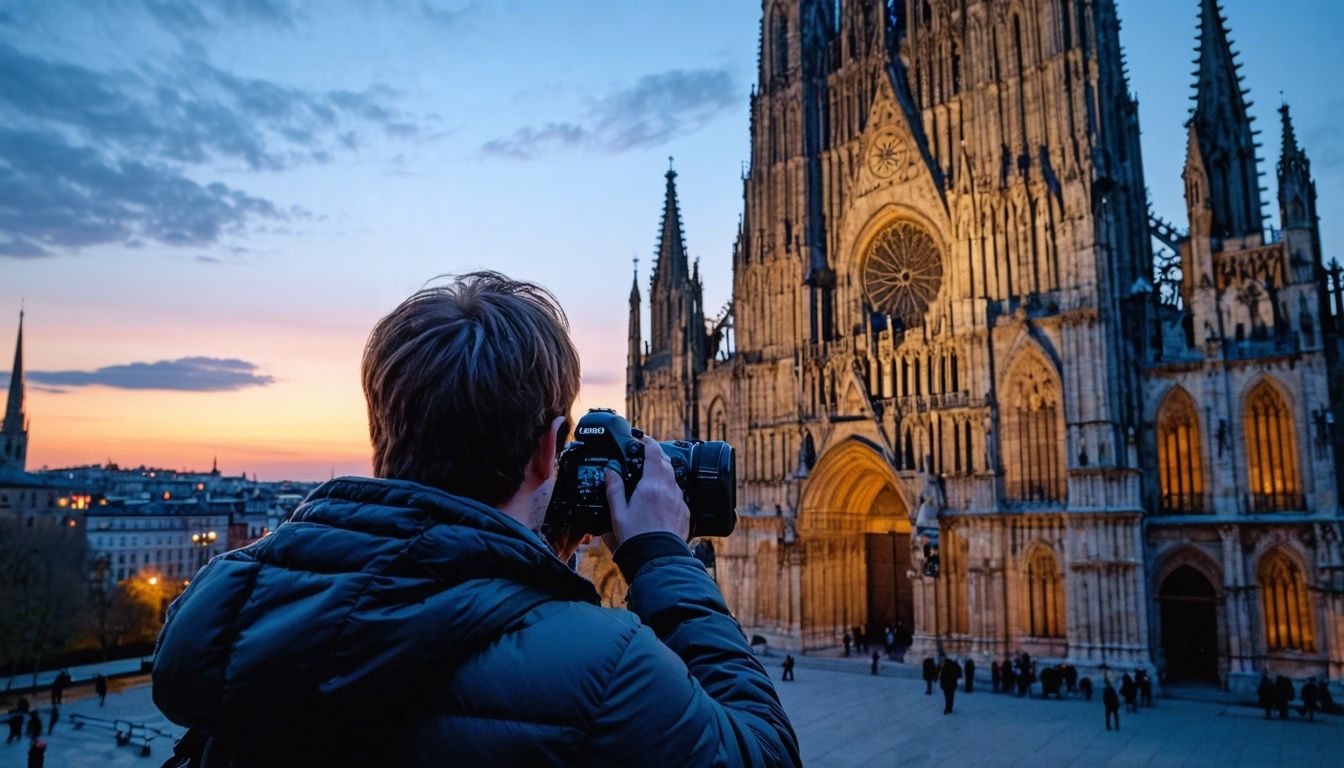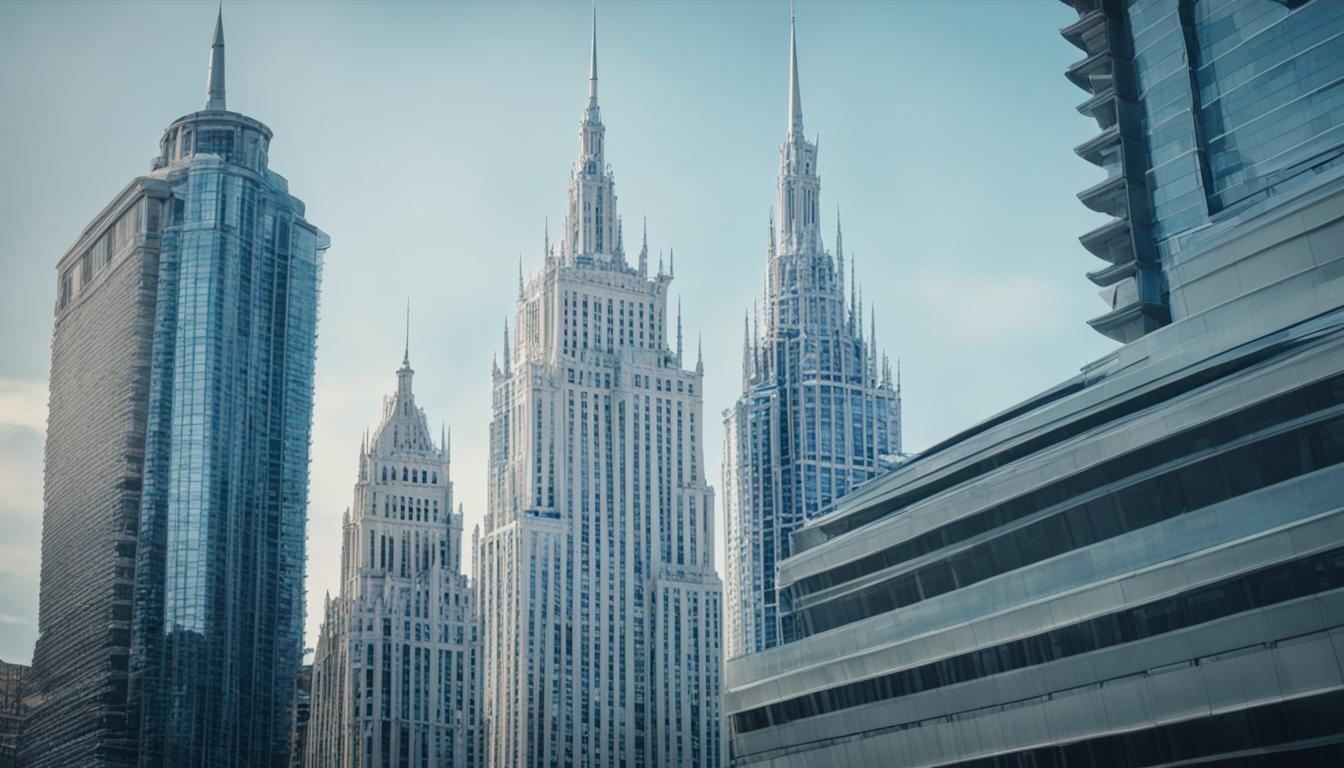Welcome to our comprehensive guide on mastering architectural detail photography. In this article, we will explore the fascinating world of architectural photography and provide insights on how to capture the essence of design through your lens. Whether you are a beginner or an experienced photographer looking to refine your skills, we have got you covered!
Architectural photography is a specialized genre that focuses on capturing the intricate details and unique elements of architectural design. It involves photographing various subjects such as buildings, cityscapes, interiors, exteriors, and of course, architectural details. These details can range from the curvature of a building facade to the intricacy of a staircase or the interplay of light and shadow in an interior space.
To excel in architectural detail photography, you need the right equipment and a solid understanding of composition and lighting principles. This will enable you to create captivating images that showcase the beauty and craftsmanship of architectural design.
Key Takeaways
- Architectural detail photography is a specialized genre that focuses on capturing the essence of architectural design.
- It involves photographing various subjects such as buildings, cityscapes, interiors, exteriors, and architectural details.
- To master architectural detail photography, you need the right equipment and a solid understanding of composition and lighting principles.
- Experiment with different angles and shooting at different times of the day to achieve unique and diverse results.
- Create an architectural photography portfolio to showcase your work and attract potential clients or employers.
The Best Gear for Architectural Photography
When it comes to architectural photography, having the right gear is essential to produce stunning results. The right equipment can make all the difference in capturing the intricate details and wide spaces of architectural designs. Here are the essential gear items every architectural photographer should consider:
Tripod
A sturdy tripod is a must-have for architectural photography. It provides stability and allows for longer exposures, ensuring sharp and crisp images. A tripod also enables precise framing and composition, which is crucial when capturing architectural details.
Wide Angle Lens
A wide-angle lens is indispensable in capturing the grandeur and scale of architectural spaces. It allows you to fit expansive interiors or exteriors into the frame and highlight the intricate details within. With a wide-angle lens, you can capture the essence of the design and tell a visual story.
Angle Finder
To capture architectural details from unique and extreme angles, an angle finder is a valuable tool. It enables you to explore different perspectives and create visually engaging compositions. With an angle finder, you can unleash your creativity and capture architectural elements from unexpected viewpoints.
Full Frame DSLR
A full-frame DSLR camera is ideal for architectural photography due to its larger sensor size and superior image quality. It captures more detail and provides better dynamic range, resulting in stunning and lifelike images. Investing in a full-frame DSLR ensures that you have the necessary equipment to deliver professional-level architectural photographs.
Photo Processing Software
After capturing architectural images, photo processing software is essential for editing and enhancing them. It allows you to fine-tune colors, adjust exposure, correct perspective distortions, and sharpen details. With photo processing software, you can bring out the best in your architectural photographs and create images that truly captivate viewers.
Investing in high-quality architectural photography gear can take your work to the next level. Whether you’re capturing the intricate details of a historical building or showcasing the modern lines of contemporary architecture, the right equipment will help you tell a compelling visual story.
Next, we’ll explore valuable tips and techniques for mastering the art of architectural photography. Stay tuned!
Tips for Architectural Photography
To improve our architectural photography skills, we need to keep a few important tips in mind. These tips will help us capture stunning images that showcase the beauty and uniqueness of architectural designs. Let’s explore some key pointers:
Choosing a Subject
When it comes to architectural photography, selecting the right subject is crucial. We should choose subjects that not only interest us but also offer opportunities to showcase our own perspective. Whether it’s a magnificent skyscraper or a historic building, our subject should resonate with our artistic vision and allow us to tell a compelling visual story.
Having Your Own Perspective
In architectural photography, it’s essential to develop our own unique perspective. Instead of simply replicating what others have captured, we should strive to bring our own creative vision to the table. By experimenting with different angles, compositions, and viewpoints, we can capture images that stand out and reflect our individual style.
Shooting at Different Times
Another valuable tip is to shoot architectural subjects at different times of the day. Lighting plays a crucial role in photography, and capturing buildings under different lighting conditions can yield diverse and interesting results. From the soft golden light of sunrise to the dramatic shadows of sunset, each time of the day offers its own ambiance and mood to enhance our images.
Creating an Architectural Photography Portfolio
Building an architectural photography portfolio is essential for showcasing our work and attracting clients or potential employers. A well-curated portfolio can provide a powerful visual representation of our skills, creativity, and attention to detail. By assembling a collection of our best architectural photographs, we can demonstrate our expertise and increase our professional visibility.
By following these tips, we can elevate our architectural photography skills and capture images that leave a lasting impression. Remember, it’s not just about technical proficiency; it’s about bringing our own unique perspective to the art of architectural photography.

The Importance of Architectural Photography Portfolios
Architectural photography portfolios are crucial for showcasing your work and presenting it in a professional manner. They serve as a visual narrative of our skills, creativity, and attention to detail. Whether you are a freelance photographer looking to attract potential clients or an architectural firm seeking to showcase your projects, a well-curated portfolio is essential.
Building your own website portfolio provides a platform for displaying your work and allowing others to easily access and appreciate your talent. It offers a personalized and professional presentation that can make a lasting impression on potential clients or employers. With a website portfolio, you have complete control over the design, layout, and organization of your work, ensuring it reflects your style and vision.
A website portfolio allows you to create an immersive experience, showcasing your architectural photography in high resolution, full-screen displays that capture the attention of viewers. With the ability to include detailed project descriptions, notes on your creative process, and behind-the-scenes insights, you can effectively communicate the story behind each photograph.
Additionally, having a website portfolio makes it easy to update and expand your body of work as you continue to refine your skills and undertake new projects. You can regularly add new photographs, create dedicated sections for different architectural styles or locations, and showcase your versatility and adaptability as a photographer.
“An architectural photography portfolio is a gateway into your creative world, where prospective clients and employers can experience the essence of your work firsthand.”
Furthermore, having an online presence with a website portfolio demonstrates your professionalism and dedication to your craft. It showcases your commitment to your career as an architectural photographer, and it establishes trust and credibility with potential clients. In a highly competitive industry, a well-presented portfolio can set you apart from your peers and position you as a top choice for architectural photography assignments.
When building your architectural photography portfolio, consider organizing your work into distinct categories or themes. This allows viewers to navigate easily and explore the particular aspects or styles that interest them. Including a mix of exterior and interior shots, as well as details and wider compositions, will showcase your versatility and range as a photographer.
Sample Architectural Photography Portfolio Table
| Category | Project | Description |
|---|---|---|
| Cityscapes | New York City | Capturing the iconic skyline and architectural landmarks of NYC. |
| Chicago | Highlighting the distinctive architecture and urban environment of Chicago. | |
| Residential | Modern Homes | Showcasing the clean lines and contemporary design of modern residential properties. |
| Vintage Houses | Capturing the charm and character of historic residential properties. | |
| Interiors | Luxury Interiors | Highlighting the exquisite details and fine craftsmanship found in high-end interiors. |
| Commercial Spaces | Showcasing the functionality and design of various commercial interiors. |
By tailoring your architectural photography portfolio to your target audience and purpose, you can effectively showcase your work, attract potential clients or employers, and ultimately expand your career opportunities in the field.
Techniques for Architectural Model Photography
Architectural model photography requires careful planning and attention to detail. To capture stunning images of architectural models, we need to consider various techniques and factors.
Planning the Scene
Before starting the photography session, it is crucial to plan the scene. Arrange the architectural models in an aesthetically pleasing manner, taking into account their unique features and design elements. Consider the scale, symmetry, and balance of the models to create visually appealing compositions.
Selecting the Right Equipment
Selecting the right equipment is essential for achieving high-quality architectural model photographs. Use a tripod to ensure stability and eliminate camera shake. Additionally, choose a lens that allows you to capture the intricate details of the models effectively.
Lighting Techniques
Proper lighting techniques can enhance the overall look and feel of architectural model photography. Experiment with different lighting setups to create the desired mood and highlight specific features. Consider using diffusers or reflectors to soften harsh lighting and minimize shadows.
Choosing the Right Composition
Composition plays a vital role in architectural model photography. Experiment with different angles, perspectives, and framing techniques to create compelling compositions. Consider the rule of thirds, leading lines, and symmetry to add visual interest to your photographs.
Adjusting Camera Settings
Adjusting your camera settings is crucial for achieving optimal results in architectural model photography. Pay attention to factors such as aperture, shutter speed, and ISO to capture sharp, well-exposed images. Use a small aperture for a larger depth of field to ensure that all details are in focus.
Shooting Techniques
Experiment with different shooting techniques to capture unique and dynamic architectural model photographs. Consider capturing detail shots, wide-angle shots, and shots from different perspectives to showcase the models from various angles.
Basic Post-Processing Techniques
After capturing the architectural model photographs, apply basic post-processing techniques to enhance the final images. Adjust the exposure, contrast, and colors to achieve the desired effect. Remember to maintain the natural look of the models while enhancing their visual appeal.

Mastering architectural model photography requires practice and attention to detail. By planning the scene, selecting the right equipment, using effective lighting techniques, choosing the right composition, adjusting camera settings, and applying basic post-processing techniques, you can create captivating images that beautifully showcase architectural models.
Conclusion
Architectural detail photography is a captivating genre that allows us to capture the essence of architectural design. By mastering the necessary skills and techniques, utilizing the right gear, and understanding the principles of composition and lighting, we can create stunning images that showcase the beauty and intricacies of architectural details.
Whether it’s capturing the curves of a modern skyscraper or the ornate details of a historic building, architectural detail photography offers a unique opportunity to explore the artistry and craftsmanship behind each structure. It allows us to highlight the fine lines, textures, and materials that make architecture come alive.
To excel in this field, it’s crucial to develop a well-curated portfolio that showcases our best work. By presenting our images with professionalism and attention to detail, we can attract the attention of clients, potential employers, and fellow enthusiasts. Building a strong online presence, be it through a website portfolio or social media platforms, can significantly enhance our visibility and reputation in the architectural photography community.
So, whether we’re a seasoned architectural photographer or just starting our photography journey, let’s continue to master architectural detail photography. Let’s capture the essence of design, unraveling the beauty hidden in every architectural detail, and create images that inspire, provoke awe, and leave a lasting impression.
FAQ
What is architectural photography?
Architectural photography is a genre that focuses on capturing the essence of architectural design through photographs of buildings, cityscapes, interiors, exteriors, and architectural details.
What equipment do I need for architectural photography?
Some essential equipment for architectural photography includes a tripod for stability, a wide-angle lens for capturing wide spaces and details, an angle finder for taking photos from extreme angles, a full-frame DSLR for high-quality images, and photo processing software for editing and enhancing the photos.
How can I improve my architectural photography skills?
To improve your architectural photography skills, it is important to choose a subject that interests you and allows you to showcase your unique perspective. Experimenting with different angles and shooting at different times of the day can yield interesting and diverse results. Additionally, creating an architectural photography portfolio can help showcase your work and attract clients or potential employers.
Why are architectural photography portfolios important?
Architectural photography portfolios are essential for showcasing your work and presenting it in a professional manner. They serve as a visual narrative of your skills, creativity, and attention to detail. Building your own website portfolio can provide a platform for displaying your work and attracting potential clients or employers.
What are the techniques for architectural model photography?
Architectural model photography requires careful planning and attention to detail. This includes understanding the unique features of the model, selecting the right equipment, using proper lighting techniques, choosing the right composition, adjusting camera settings, and applying basic post-processing techniques to enhance the final images.
Why is architectural detail photography captivating?
Architectural detail photography is a captivating genre that allows photographers to capture the essence of architectural design. By mastering the necessary skills, utilizing the right gear, and understanding the principles of composition and lighting, photographers can create stunning images that showcase the beauty and intricacies of architectural details. With a well-curated portfolio and effective presentation, architectural photographers can attract clients, showcase their skills, and make a name for themselves in the field.




